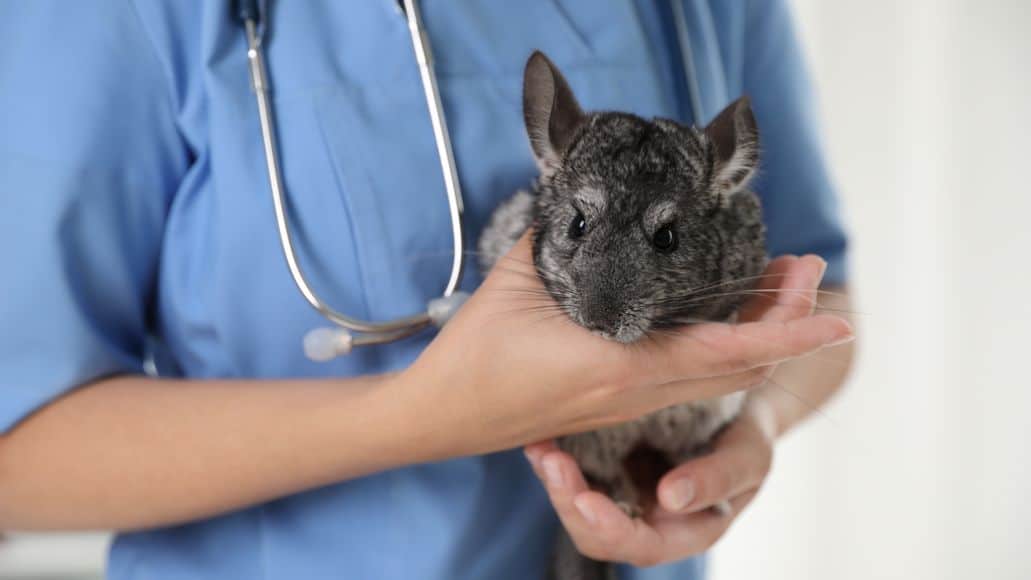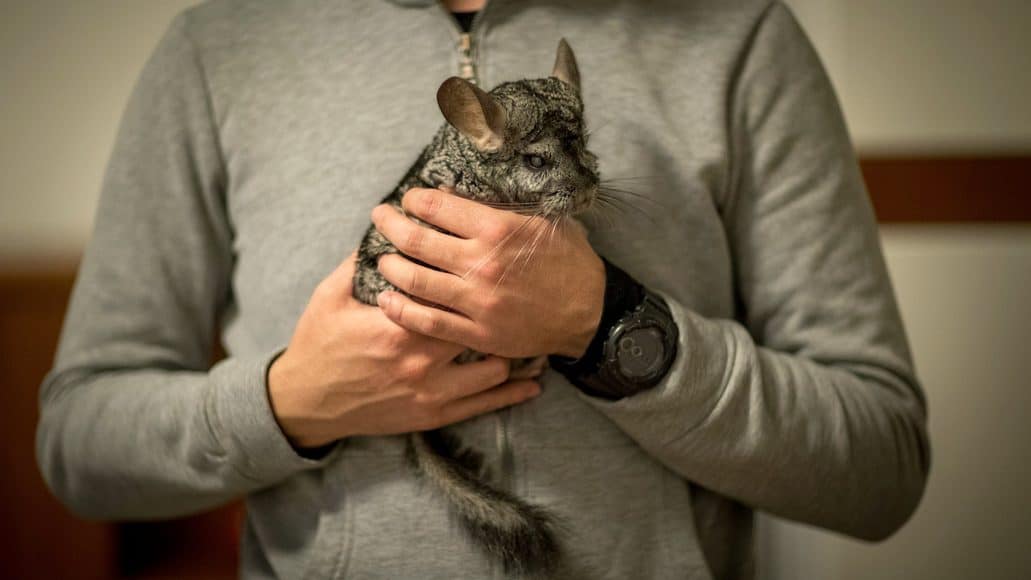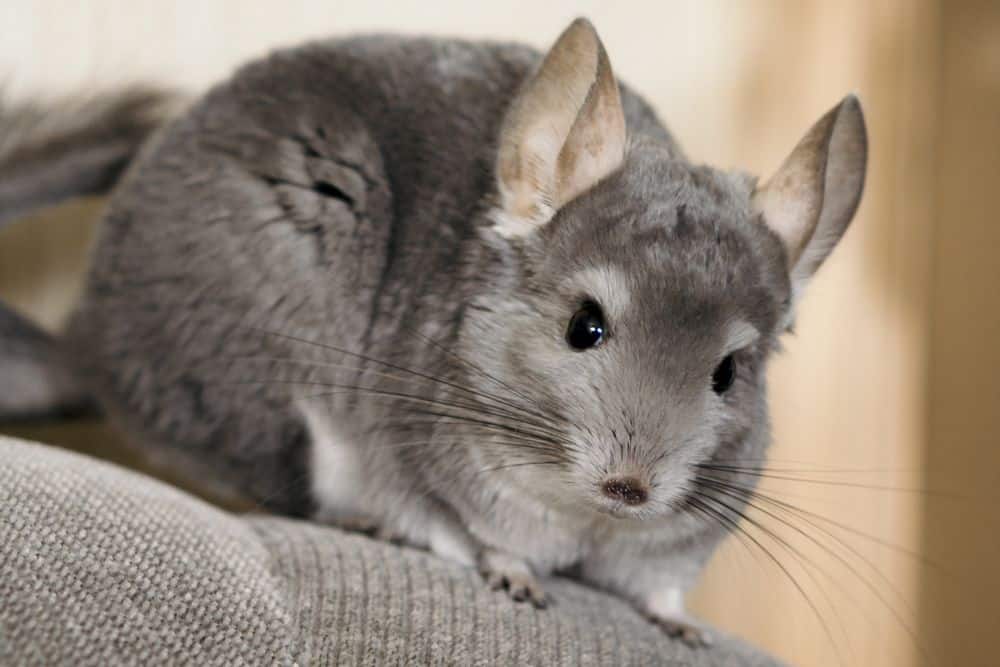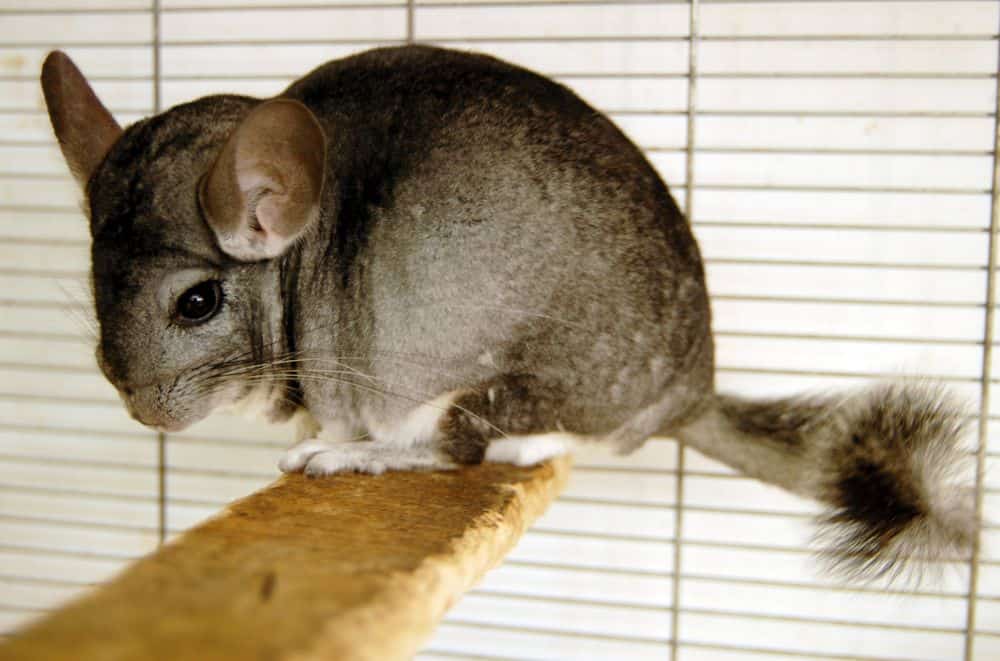
A chinchilla broken leg means certain death.
If a small animal like the chinchilla gets a serious injury, it can no longer escape predators.
But it’s different in captivity, right?
Yes, it is. In captivity, a chinchilla has a good chance of surviving a broken leg.
But first, you have to realize your pet has injured itself. And that is not always easy.
Keep reading to learn how to detect a broken leg in a chinchilla and what to do about it. We will cover absolutely everything you need to know about broken chinchilla legs.
Contents
Chinchilla Broken Leg
Fractures in chinchillas can be painful and debilitating. In mild cases, your vet will place a splint or plaster to set the bone, but in the case of a severe break or an old injury, the leg might even have to be amputated.
Chinchillas could live with a broken limb, but the recovery can be long and difficult. Some animals even go into shock if left untreated for long. If you suspect your pet has a broken leg, please see your vet right away.

How do you know your pet has a broken leg? Unfortunately, you may not even realize it. You’ll probably notice that something is wrong, but may not know what. To that end, let’s go over some behaviors that can indicate your chinchilla may have a broken leg.
Signs Of A Broken Leg In Chinchillas
If you have seen your chinchilla get hurt due to a fall from a height or during a fight with a cagemate, please be on the lookout for signs of injury. If you haven’t seen your pet taker a fall, but you notice any of the following common signs of a broken leg in chinchillas, you should get your pet medical attention.
- Lethargy
- Labored breathing
- Hiding
- Whimpering
- Lack of appetite
- Struggling to move
- Avoiding upper levels of the enclosure
- Not putting pressure on the leg
- Oddly shaped limb
- Uncharacteristic aggression
Of course, you may also see an obvious sign, like your chinchilla dragging back legs behind it. If you see these signs and suspect a broken leg, please seek medical attention for your chinchilla. Without the right treatment, your pet could go into shock, so act fast.
How To Treat A Broken Chinchilla Leg
Your vet might recommend certain tests and X-rays to assess the severity of the break. Based on this, she or he might recommend a splint, cast, or surgical amputation for your chinchilla’s broken limb.
Please understand that amputation can be a tough decision to make. But in some cases, it could reduce the pain and improve your pet’s quality of life.
Home Care Guidelines

Your vet will provide you with several guidelines for home care for your chinchilla. This can include resting and minimizing movement, feeding it a healthy diet, administering medicines, and changing bandages. Please follow these instructions to speed up the healing process and prevent complications.
Make Changes To The Cage
You may also want to minimize your chinchilla’s stress and movement. For this purpose, you need to make certain changes to its cage, including the following.
- Provide a spacious single-level cage to reduce climbing and jumping activities
- Add several hiding areas and nesting boxes for your injured chinchilla to rest
- Separate it from its cage mates to prevent stress and unnecessary movement
- Add multiple food and water bowls for your pet to easily access hay and water
- Remove the toys and running wheel so your chinchilla is not tempted to exert the injured leg
- Maintain cleanliness and hygienic conditions
Monitor Your Chinchilla’s Food And Water Intake
Keep an eye on your chinchilla’s food and water intake. Since your pet might not move much, make sure to keep these items easily accessible for it.

If you think your pet is not eating well or appears to be losing weight, please check with your vet regarding supplementation, dietary changes, etc.
Administer Pain Medication
Your vet will prescribe pain medicine to keep your chinchilla comfortable during its recovery period. Administer the medications as prescribed. Watch out for adverse reactions. Be sure to call your vet if you notice any behavioral changes in your chinchilla.
Avoid Handling Your Chinchilla
Do not handle your chinchilla unnecessarily while it is recovering. Provide a calm and serene environment for your pet. By minimizing stress, you can promote healing.
Take it For Follow-Ups
Take your chinchilla for follow-up visits to the animal clinic to change bandages, etc. Your vet might also X-ray the leg again to ensure it is healing as expected and to avoid complications.
Be Patient
Healing broken bones in chinchillas can take time. No two chinchillas are the same, and each chinchilla will heal differently. Please be patient while your pet recovers. Make sure to provide it with the love and care it needs during this difficult time.
Can A Chinchilla Live With A Broken Leg?

The good news is that a chinchilla can live with a broken limb or fracture, as long as it receives prompt medical attention and care. Your vet will recommend a splint, plaster/cast, or surgery, depending on the extent of the break.
Your chinchilla’s prognosis will mainly depend on its age, overall health, and the location of the break. With timely treatment and optimum home-care, your small rodent can recover quickly and continue to live a normal life.
Are Chinchilla Bones Fragile?
Compared to larger animals, chinchilla’s bones are quite fragile. Their delicate, thin bones are susceptible to breaks and fractures, especially when subjected to trauma or accidents.
Chinchillas are tiny rodents weighing between 14 and 21 ounces, which is between 500 and 800 grams. Their delicate bones are proportionate to their tiny size. And certain sicknesses can make their bones even more brittle.
That is why you must handle your chinchilla with extreme caution. Avoid excessive handling, and never pick your pet up using the tip of its tail.
Most importantly, do not place it in situations where it could fall from a significant height. Educate young kids about proper care and handling of your delicate and fragile chinchilla.
Do Chinchillas Feel Pain?
Yes, like all animals, chinchillas have a nervous system which enables them to perceive trauma, pain, etc. Pain is necessary for all animals, because it helps trigger a fight or flight response.
This response, in turn, can help the animal take protective action or use defense strategies to avoid further damage.
It is important to understand that chinchillas tend to show different mechanisms of pain perception than humans or other larger animals. Their pain thresholds also differ from those of other species.
It is also important to understand that these small critters are pretty good at hiding pain and discomfort. That is why you must monitor and interact with your pet regularly to watch out for signs of pain or discomfort.
Mostly, chinchillas in pain tend to show decreased activity levels, lethargy, hiding, avoiding movement, uncharacteristic aggression towards humans and/or cage mates, lack of appetite, altered grooming patterns, excess vocalization, etc.
If you suspect your chinchilla is in pain, please see your vet right away.
Do Chinchillas Get Hurt Easily?

Unfortunately, chinchillas have delicate bone structures and small sizes that make them susceptible to injuries. Their bones are especially fragile and prone to breaks, fractures, and sprains.
In the wild, chinchillas spend a lot of time jumping, climbing, and navigating rocky terrain. They also have to escape predators using swift movements. Due to this, they are prone to falling from heights, getting stuck in tight crevices, or encountering other hazards.
In captivity, you can minimize your chinchillas’ risk of getting hurt by providing a safe and secure enclosure. You can also supervise interactions and playtime outside of the cage.
Another thing you can do to minimize injuries to your chinchillas is to schedule regular veterinary checkups. These can help detect issues early on and minimize complications.
Finally, you should always be mindful of your chinchilla’s fragility and handle your pet with caution.
Chinchilla Leg Fractures And Sprains: Final Thoughts
A broken chinchilla leg is a serious matter. In the wild, it means death. But even in captivity, it will cause your pet a lot of pain and you may not even realize it is suffering.
Look for the signs listed above to determine if your chinchilla might be suffering from a broken leg. And if you suspect a chinchilla broken leg, please take your pet to see your vet as soon as possible.
Leave a Reply